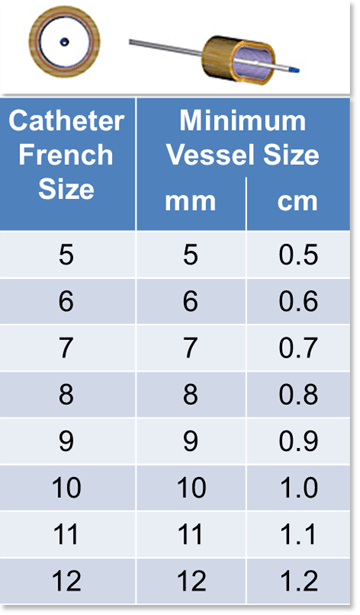| First Section Page | Page 10 of 14 | Last Section Page |
Performing a Scan
Regardless of site selection for placement of a central venous catheter, a pre-assessment should be performed to locate the site that will provide the most efficient access with the least amount of complications and risk to the patient.  Consider site, line necessity, vein size, catheter size and compressibility of vein. Once the vessel is identified, mark and measure from approximate insertion site to the third intercostal space. This will ensure proper catheter length selection prior to insertion. Healthy veins are symmetrical with smooth, thin walls; they are of adequate size, compressible and become consistently larger as they approach the heart.
Consider site, line necessity, vein size, catheter size and compressibility of vein. Once the vessel is identified, mark and measure from approximate insertion site to the third intercostal space. This will ensure proper catheter length selection prior to insertion. Healthy veins are symmetrical with smooth, thin walls; they are of adequate size, compressible and become consistently larger as they approach the heart.
While performing your pre-scan, consider the vein size in comparison to the catheter French size (Fr), the indwelling catheter should occlude no more than 1/3 of the vessel. Keep the principles of good probesmanship in mind as you begin the scan:
- Keep the probe at a 90 degree angle
- Use plenty of gel
- Hold the probe with your thumb, index and middle fingers allowing the other two fingers to form a base and rest on the patients arm
- Check for screen orientation
- Adjust screen setting for optimum screen image of vessels
Make small movements; slide the probe and adjust the beam angle (perpendicular) to achieve the best cross sectional image of the vessels (transverse). Remember, because the veins are fluid-filled, they appear as black circles on the screen when in the transverse (cross-sectional) view. Make sure your probe is perpendicular to the vessel walls and that you are scanning at a 90 degree angle.